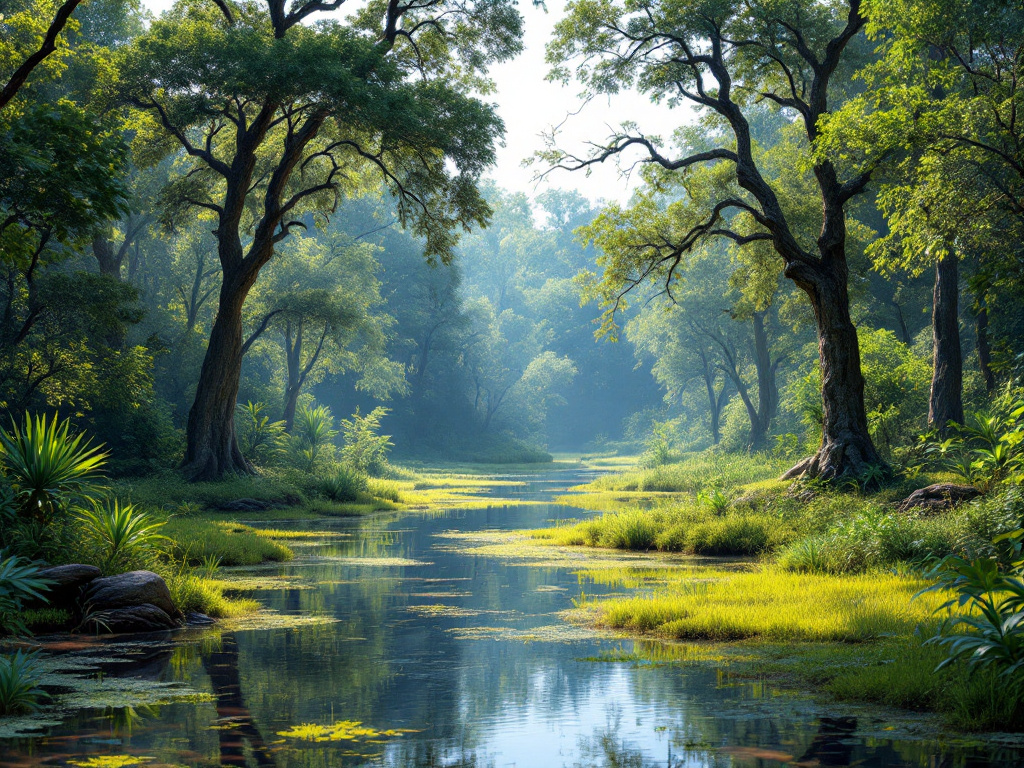Image generated by flux-ai.io & content generated by ChatGPT Version 4o-mini
Understanding Florida’s Scrub Ecosystems: A Local Perspective
Franklin County, Florida, is known for its diverse natural landscapes, including beautiful coastlines, lush forests, and unique scrub ecosystems. A recent study by researchers Lynn Proenza and Michael Andreu shines a light on the importance of these scrub habitats, revealing how they are crucial for both wildlife and the environment.
What is a Scrub Ecosystem?
Scrub ecosystems are areas characterized by sandy, nutrient-poor soil and a variety of drought-resistant plants. Think of them as Florida’s version of a tough survivor—these plants have adapted to thrive in dry conditions where water drains quickly. They have unique features, like waxy leaves that reduce water loss and deep roots that help them soak up whatever moisture is available.
In our local context, you might notice these scrub habitats while driving along some of the back roads in Franklin. They often feature low-growing trees and shrubs, including species like the sand live oak and scrub hickory, that are specially suited to withstand the harsh sun and sporadic rainfall.
Fire: A Friend, Not a Foe
One of the most surprising findings from the study is the role of fire in maintaining healthy scrub ecosystems. In fact, fires are a natural part of the scrub’s life cycle, occurring roughly every 5 to 30 years. These fires help thin out the dense vegetation, making room for a variety of plant species to grow. This process not only encourages biodiversity but also prevents the scrub from turning into a different type of ecosystem, known as a xeric hammock, where fewer plant species thrive.
For residents of Franklin, understanding the role of fire can help alleviate concerns about controlled burns that might occur in nearby areas. These burns are not just safety measures—they are essential for the health of the ecosystem, supporting a rich variety of plants and animals.
Biodiversity and Conservation Efforts
The study highlights several key plant species that thrive in Florida’s scrub, such as the Florida rosemary and the scrub palmetto. These plants provide food and habitat for many local wildlife species, including birds and small mammals. For Franklin’s residents, this means that protecting our scrub habitats is vital for preserving local biodiversity.
The researchers noted that without regular fires, the diversity of plant life in these ecosystems could decrease over time. This is particularly relevant for Franklin County, where maintaining natural habitats supports not only wildlife but also recreational activities like birdwatching and hiking—popular pastimes for many locals.
Why It Matters to Us
Protecting and understanding our scrub ecosystems can have significant implications for Franklin County. These habitats play a vital role in water conservation, help prevent soil erosion, and contribute to the overall health of our environment. With an increasing number of farms and agricultural activities in the area, residents can benefit from healthy ecosystems that support pollinators and other wildlife essential for farming.
As we enjoy the picturesque landscapes of Franklin, it’s important to remember the hidden wonders of scrub ecosystems. By supporting conservation efforts and understanding the natural processes at play, we can ensure that these unique habitats continue to thrive for generations to come.
In summary, the findings from Proenza and Andreu’s research serve as a reminder of the delicate balance within our local environment. By valuing and protecting our scrub ecosystems, Franklin County can continue to celebrate its natural beauty while fostering a vibrant community.
References
FOR305/FR373: Common Woody Plants of Florida Scrub Ecosystems. (n.d.). Ask IFAS – Powered by EDIS. https://edis.ifas.ufl.edu/publication/FR373

